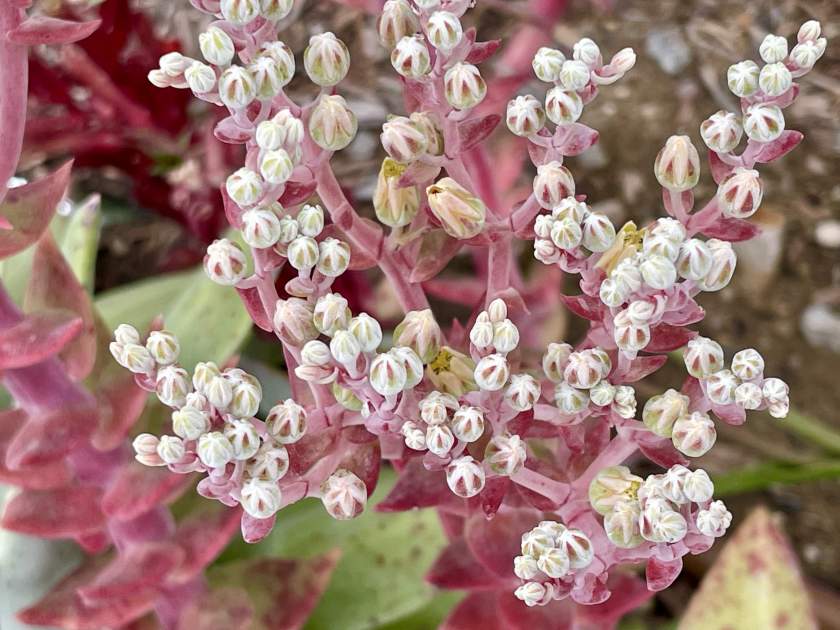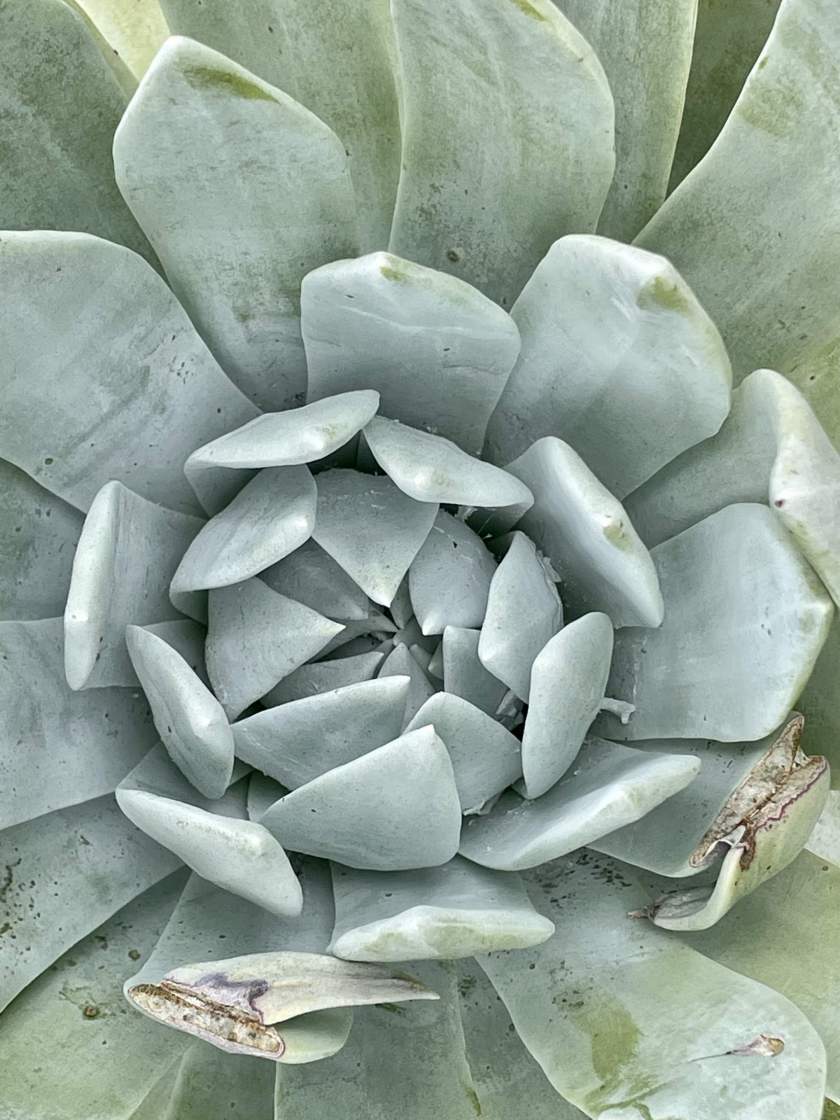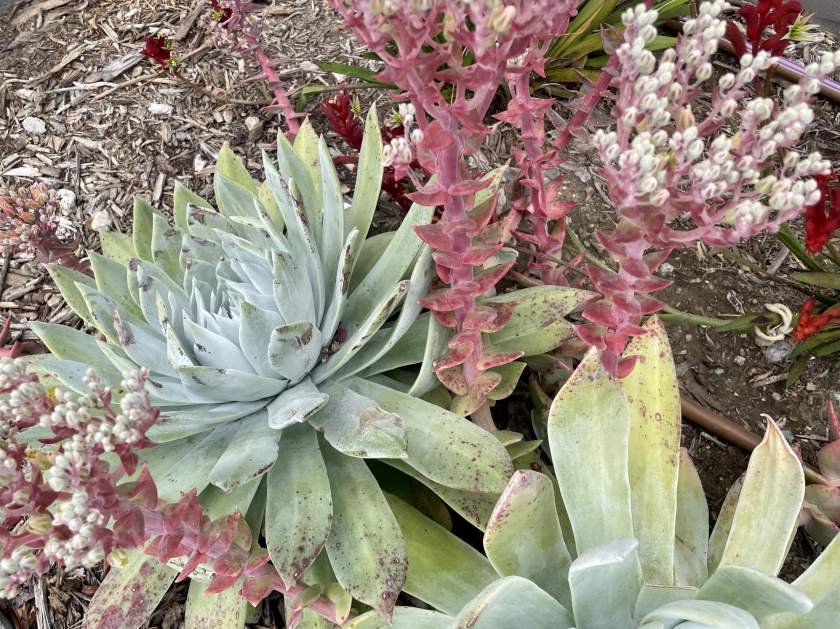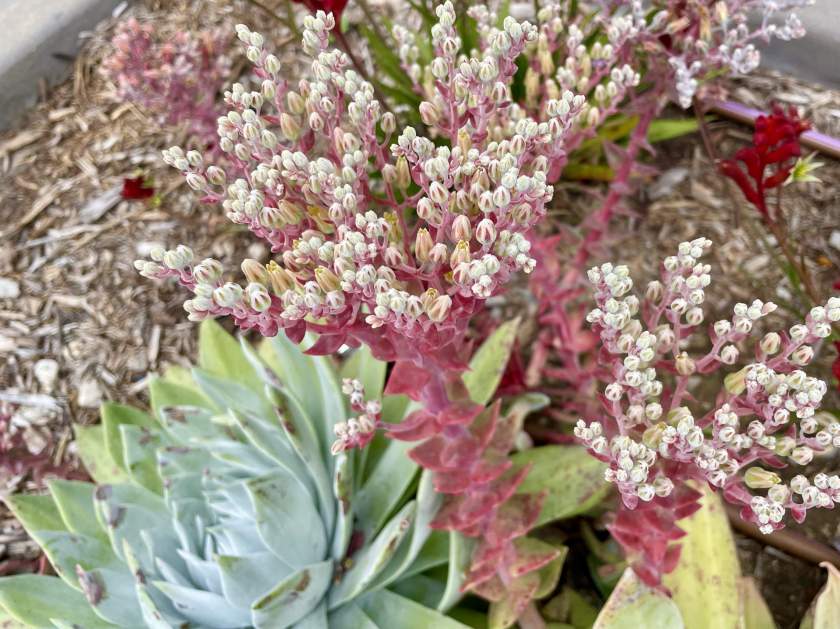Dudleya pulverulenta, commonly known as Chalk Liveforever or Chalk Dudleya, is a species of succulent plant native to California, specifically the coastal regions from Santa Barbara County to Baja California. It belongs to the Crassulaceae family and is known for its stunning rosette of powdery blue-gray leaves. Chalk Dudleya is highly valued for its ornamental appeal and is often cultivated in rock gardens, containers, and succulent displays.
Dudleya pulverulenta is a perennial succulent with a distinctive compact rosette form. Its leaves are thick, fleshy, and covered in a powdery white or gray coating, which gives the plant its characteristic appearance. The leaves are spoon-shaped and can vary in size, ranging from 3 to 6 inches or 6 to 15cm in length. In spring or early summer, Chalk Dudleya produces tall flower stalks that bear clusters of small, star-shaped yellow flowers. These flowers attract pollinators such as bees and butterflies.
How to Grow and Take Care of Dudleya pulverulenta:
Dudleya pulverulenta is relatively easy to grow and care for. Here are some guidelines to help you cultivate and maintain a healthy Chalk Dudleya plant:
Chalk Dudleya thrives in full sun to partial shade. Provide it with bright, indirect sunlight for optimal growth. In hotter regions, it benefits from some afternoon shade to protect it from scorching. This succulent is adapted to a Mediterranean climate and can tolerate a wide temperature range, from hot summers to cool winters. However, it is important to protect the plant from frost or freezing temperatures, as prolonged exposure can damage or kill it.
The soil for Dudleya pulverulenta should be well-draining to prevent waterlogging, as excess moisture can cause root rot. A sandy or rocky soil mixture works well, providing excellent drainage. Avoid heavy clay soils that retain water. When watering, it’s important to strike a balance. Chalk Dudleya is a drought-tolerant plant that can withstand dry conditions, but it also benefits from occasional deep watering. Water the plant thoroughly, allowing the soil to dry out completely between waterings. Overwatering can be detrimental, so it’s best to err on the side of underwatering rather than overwatering.
Dudleya pulverulenta is a low-maintenance plant that does not require frequent fertilization. In fact, it generally thrives in nutrient-poor soil. Applying a diluted, balanced succulent fertilizer once or twice during the growing season, following the manufacturer’s instructions, can provide a slight boost. However, be cautious not to over-fertilize, as excessive nutrients can harm the plant.

Pruning and Maintenance of Dudleya pulverulenta:
Pruning requirements for Chalk Dudleya are minimal. Remove any dead or drying leaves by gently pulling them away from the base of the plant. This helps maintain a neat appearance and prevents potential disease or pest issues. If the flower stalks start to wither or fade after blooming, you can trim them back to the base. Otherwise, Dudleya pulverulenta is generally a low-maintenance plant that requires little intervention.
Pests and Diseases: Chalk Dudleya is generally resistant to pests and diseases. However, in certain conditions, it may be susceptible to common succulent pests like mealybugs or aphids. Regularly inspect your plant for any signs of infestation, such as sticky residue, distorted leaves, or visible insects. If necessary, use appropriate organic pest control methods or insecticidal soap to manage the problem. Additionally, ensure good air circulation around the plant by providing adequate spacing between Dudleya pulverulenta and other nearby plants. Good air circulation helps prevent the development of fungal diseases, such as rot or powdery mildew. Avoid overwatering and ensure the leaves have enough airflow to stay dry.

Propagation of Dudleya pulverulenta:
Chalk Dudleya can be propagated through various methods, including leaf cuttings, offsets, or seed germination. Leaf cuttings involve carefully removing a healthy leaf from the plant and allowing it to dry for a few days until calluses form on the cut end. Once calloused, the leaf can be placed in well-draining soil or a succulent propagation mix, where it will develop roots and eventually grow into a new plant. Offsets, also known as “pups,” are small plantlets that emerge from the base of mature Dudleya plants. These can be gently separated and replanted to establish new individuals. Seed germination requires patience, as it can take several weeks to months for the seeds to sprout and develop into young plants.
In conclusion, growing and caring for Dudleya pulverulenta, or Chalk Liveforever, involves providing it with adequate sunlight, well-draining soil, and proper watering practices. Remember to protect it from frost and freezing temperatures. Regular pruning, pest monitoring, and good air circulation contribute to the plant’s overall health. With its striking blue-gray leaves and yellow flowers, Dudleya pulverulenta is a beautiful addition to succulent gardens or rockeries.





